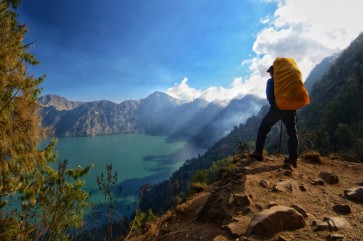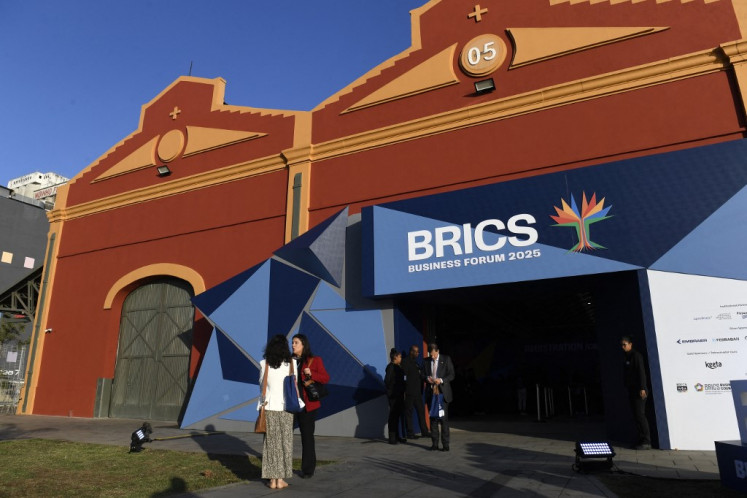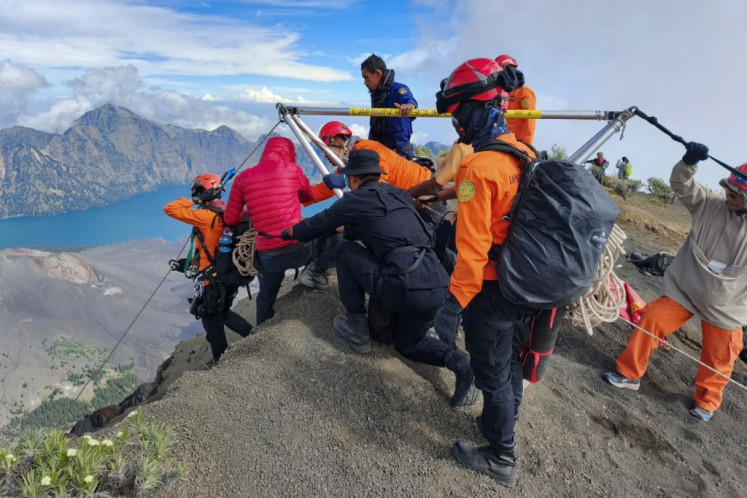Popular Reads
Top Results
Can't find what you're looking for?
View all search resultsPopular Reads
Top Results
Can't find what you're looking for?
View all search resultsCure to sinking Jakarta?
The paper proposed 10 solutions, among them are: restriction of groundwater extraction, natural and artificial recharge of aquifers, development of alternative water supply (instead of groundwater) and improving governance and decision-making.
Change text size
Gift Premium Articles
to Anyone
Y
ears ago, water specialists from the Netherlands wrote a 12-page paper about sinking cities in the world. Jakarta, along with Bangkok and Ho Chi Minh City, are high on the list as the fastest sinking cities.
The paper proposed 10 solutions, among them are: restriction of groundwater extraction, natural and artificial recharge of aquifers, development of alternative water supply (instead of groundwater) and improving governance and decision-making.
The Dutch experts from independent applied research institute Deltares and the government have touted their expertise in water management to offer solutions to Jakarta’s sinking. What they agreed to do with Indonesia recently, however, is not among the 10 solutions. Rather, they agreed on a scenario in which Jakarta will never stop sinking and the administration will instead build a large dike — now called the outer sea dike — to protect the city from sea waters while Jakarta will keep sinking.
The next plan is to build a 20-kilometer western sea dike that will serve as a toll road. Next in the plan is a 12-km eastern sea dike.
This scenario is now among a series of initiatives called “no-regret measures”, which means it must be carried out because Indonesia will never regret the decision to build the dike in Jakarta Bay. Along with the dikes, which will span 32 km in total, the government will build a money-making reclamation project 2,000 hectares in size to help pay back the money it had borrowed for the giant seawall, officially called the National Capital Integrated Coastal Development (NCICD) initiative. The megaproject costs Rp 262.2 trillion (US$18.7 billion) in total.
Environmentalists, maritime scholars and fishermen groups have warned the government of the huge environmental and social impacts of the giant sea wall. What is more fundamental, they say, is whether we really need the dikes. The Indonesian Forum for the Environment (Walhi) has claimed that the megaproject seemed like a pretext for the construction of toll roads and other structures for commercial purposes rather than protecting Jakarta. For the Indonesian Traditional Fishermen Association (KNTI), ensuring that Jakarta will stop sinking and restoring the quality of Jakarta Bay waters matter more than the giant seawall.
The Public Works and Housing Ministry and other studies have measured the rate of Jakarta’s land subsidence at 1-15 centimeters per year, making it among the 10 cities in the world with the fastest sinking pace, partly due to groundwater extraction.
The giant seawall will not stop Jakarta from sinking if the problem of groundwater extraction remains unsolved. The megaproject could even exacerbate the problems facing Jakarta and other regions, including Banten and Bangka Belitung, which will supply 300 million cubic meters of sand for the project.
The ministry says the government is open to public suggestions until February next year. The government has plenty of time to listen carefully and think about whether the giant seawall will save Jakarta from disaster or create more problems.










